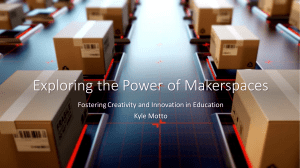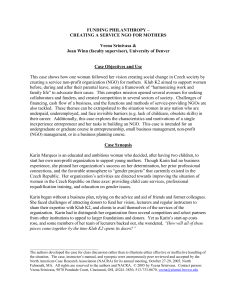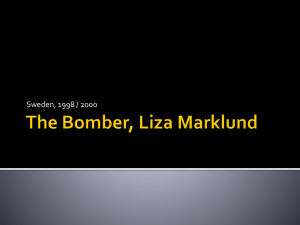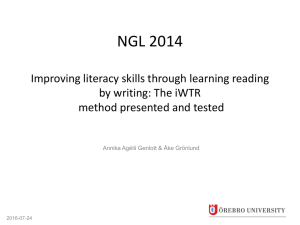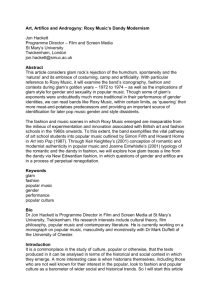Innovating Heritage: Cultural Institutions and New Digital Practices
advertisement
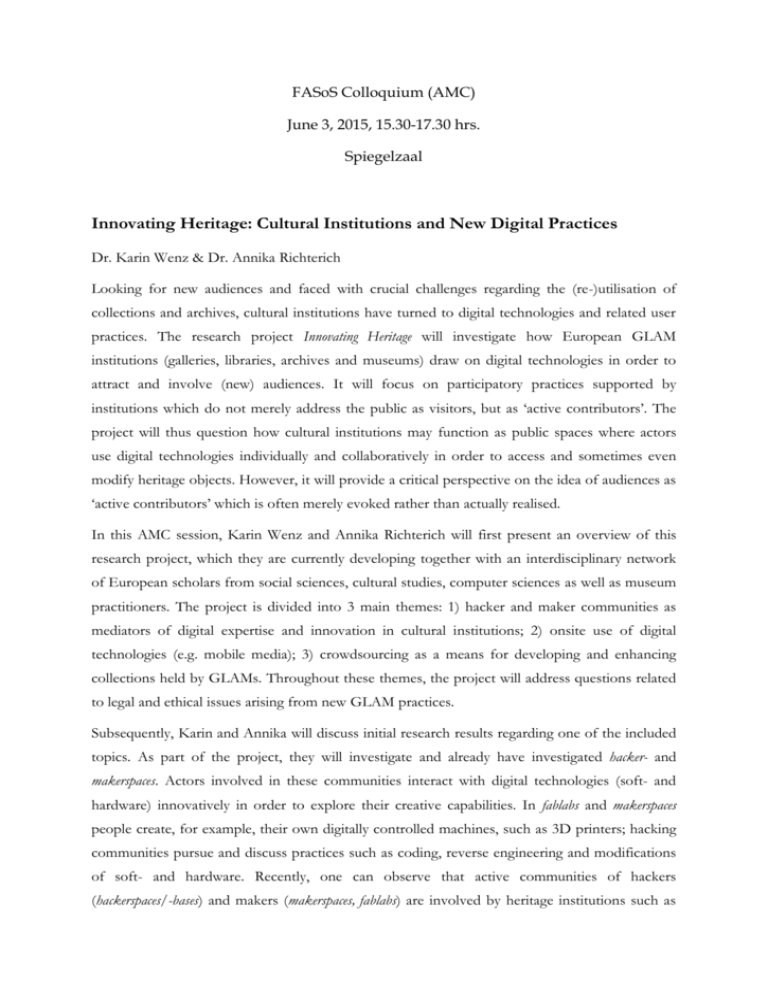
FASoS Colloquium (AMC) June 3, 2015, 15.30-17.30 hrs. Spiegelzaal Innovating Heritage: Cultural Institutions and New Digital Practices Dr. Karin Wenz & Dr. Annika Richterich Looking for new audiences and faced with crucial challenges regarding the (re-)utilisation of collections and archives, cultural institutions have turned to digital technologies and related user practices. The research project Innovating Heritage will investigate how European GLAM institutions (galleries, libraries, archives and museums) draw on digital technologies in order to attract and involve (new) audiences. It will focus on participatory practices supported by institutions which do not merely address the public as visitors, but as ‘active contributors’. The project will thus question how cultural institutions may function as public spaces where actors use digital technologies individually and collaboratively in order to access and sometimes even modify heritage objects. However, it will provide a critical perspective on the idea of audiences as ‘active contributors’ which is often merely evoked rather than actually realised. In this AMC session, Karin Wenz and Annika Richterich will first present an overview of this research project, which they are currently developing together with an interdisciplinary network of European scholars from social sciences, cultural studies, computer sciences as well as museum practitioners. The project is divided into 3 main themes: 1) hacker and maker communities as mediators of digital expertise and innovation in cultural institutions; 2) onsite use of digital technologies (e.g. mobile media); 3) crowdsourcing as a means for developing and enhancing collections held by GLAMs. Throughout these themes, the project will address questions related to legal and ethical issues arising from new GLAM practices. Subsequently, Karin and Annika will discuss initial research results regarding one of the included topics. As part of the project, they will investigate and already have investigated hacker- and makerspaces. Actors involved in these communities interact with digital technologies (soft- and hardware) innovatively in order to explore their creative capabilities. In fablabs and makerspaces people create, for example, their own digitally controlled machines, such as 3D printers; hacking communities pursue and discuss practices such as coding, reverse engineering and modifications of soft- and hardware. Recently, one can observe that active communities of hackers (hackerspaces/-bases) and makers (makerspaces, fablabs) are involved by heritage institutions such as Innovating Heritage: Cultural Institutions and New Digital Practices museums and galleries. Thereby, innovative digital practices enter public spaces in new ways and reach hacking/making communities but also younger users of digital technologies as new audiences. The second part of this presentation will hence address the following questions: How do hacker and maker communities emerge, and which motivations and interests hold those members together? How can such communities be involved in GLAM contexts allowing for public and innovative participation, (without exploiting their practices), and how do average/amateur users of digital technologies and hacking/making experts interact in events aiming at an innovative handling of heritage objects? The presentation will be partly based on field research during a hackathon which Karin and Annika organised in Maastricht (as part of their KIEM research project), museum hackathons which they attended, and their cooperation with and investigation of the ACKspace hackerspace in Heerlen. 2







